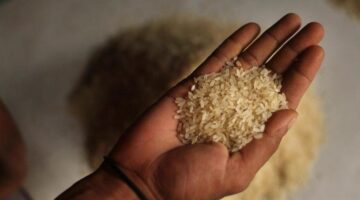
Easy Tips: How To Soften Dried Blood On A Wound
To soften dried blood on a wound, soaking a clean cloth in warm water and gently applying it can help loosen the dried blood for easier removal. Once softened, you can carefully wipe away the blood with a clean cloth or cotton pad. Avoid using hot water, as it can further irritate the wound. It’s important to handle the wound gently to prevent any additional pain or discomfort. Remember, proper wound care is crucial for quick and effective healing.
How to Soften Dried Blood on a Wound
Introduction
Imagine you got a cut or scrape while playing outside, and now you see dried blood on your wound that seems tough to clean. Don’t worry! In this article, we will guide you on how to soften dried blood on a wound so that you can clean it gently and promote faster healing. Let’s dive in!
Understanding Dried Blood on Wounds
When you get a wound, your body’s natural response is to form a scab to protect it while it heals. This scab is made of dried blood, platelets, and other components to seal off the wound from harmful germs. Over time, the scab dries and hardens, making it challenging to clean the wound properly.
Importance of Softening Dried Blood
It’s essential to soften dried blood on a wound before cleaning it to prevent reopening the wound and causing further discomfort. Softening the dried blood can make it easier to remove gently without causing additional pain or damage to the skin around the wound.
Methods to Soften Dried Blood on a Wound
1. Warm Water Soaks
One of the simplest and most effective ways to soften dried blood on a wound is by using warm water soaks. Here’s how you can do it:
– Fill a clean basin or bowl with warm water.
– Soak a clean washcloth in the warm water.
– Gently place the soaked washcloth on the wound and let it sit for a few minutes.
– The warmth of the water will help soften the dried blood, making it easier to clean.
2. Saline Solution
Saline solution is a gentle and natural way to soften dried blood on a wound. You can create your own saline solution by mixing salt in water. Here’s how to use it:
– Mix one teaspoon of salt in a cup of warm water to create a saline solution.
– Soak a clean cotton ball or gauze in the saline solution.
– Place the soaked cotton ball or gauze on the wound and let it sit for a few minutes.
– The salt in the solution will help loosen the dried blood for easier removal.
3. Hydrogen Peroxide
Hydrogen peroxide is a common antiseptic that can also help soften dried blood on wounds. Here’s how to use it safely:
– Pour a small amount of hydrogen peroxide on a cotton ball.
– Gently dab the cotton ball on the dried blood on the wound.
– Allow the hydrogen peroxide to fizz and bubble, which can help soften the dried blood.
– Be careful not to use too much hydrogen peroxide, as it can irritate the skin.
4. Petroleum Jelly
Petroleum jelly, also known as Vaseline, can be a soothing way to soften dried blood on a wound. Here’s how to use it:
– Apply a thin layer of petroleum jelly around the dried blood on the wound.
– Let it sit for a few minutes to soften the dried blood.
– Gently wipe away the softened blood with a clean cloth or cotton ball.
– Petroleum jelly can also help protect the wound and keep it moisturized.
5. Commercial Wound Cleaners
If the dried blood on the wound is stubborn and hard to soften with home remedies, you can consider using commercial wound cleaners. These products are specifically designed to help clean and soften dried blood on wounds effectively. Make sure to follow the instructions on the product carefully for safe use.
After Softening the Dried Blood
Once you have successfully softened the dried blood on the wound, it’s important to clean the area gently with mild soap and water. Pat the wound dry with a clean towel and apply a thin layer of antibiotic ointment to protect it from infections. Finally, cover the wound with a sterile bandage to promote healing and prevent further contamination.
Softening dried blood on a wound is a crucial step in proper wound care. By using simple and safe methods like warm water soaks, saline solution, hydrogen peroxide, petroleum jelly, or commercial wound cleaners, you can make the cleaning process easier and less painful. Remember to always be gentle with your wound and seek medical attention if you notice signs of infection or if the wound does not heal properly. Take care of your wounds, and they will heal faster, allowing you to get back to your adventures in no time!
Non Adhesive Bandage
Frequently Asked Questions
How can I safely soften dried blood on a wound?
To safely soften dried blood on a wound, start by gently cleaning the area with mild soap and water. Avoid scrubbing vigorously to prevent further irritation. Then, place a warm damp cloth over the dried blood for a few minutes to help loosen it. Be sure to pat the area dry afterwards to remove any excess moisture.
Is it safe to use hydrogen peroxide to soften dried blood on a wound?
Avoid using hydrogen peroxide to soften dried blood on a wound as it can be too harsh and may delay the healing process. Stick to gentle methods like warm water soaks or saline solution to help loosen the dried blood without causing unnecessary irritation.
Can I use a saline solution to soften dried blood on a wound?
Yes, using a saline solution can be an effective and gentle way to soften dried blood on a wound. Simply mix a small amount of salt in warm water to create the solution, then gently dab it onto the affected area using a clean cloth or cotton pad. The saline solution can help hydrate the dried blood and make it easier to remove.
Final Thoughts
In conclusion, to soften dried blood on a wound, use gentle cleaning techniques such as warm water or saline solution. Gently wiping or soaking the area can help loosen the dried blood, making it easier to clean. Remember to avoid scrubbing or picking at the dried blood to prevent further irritation and promote faster healing. Prioritize gentle care and patience when dealing with dried blood on a wound for optimal healing results.




